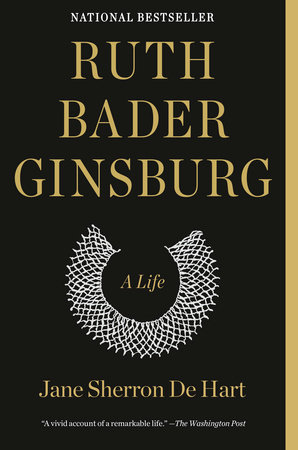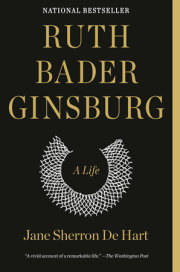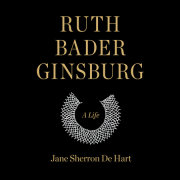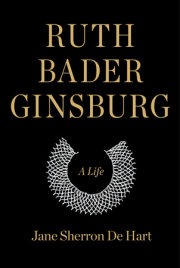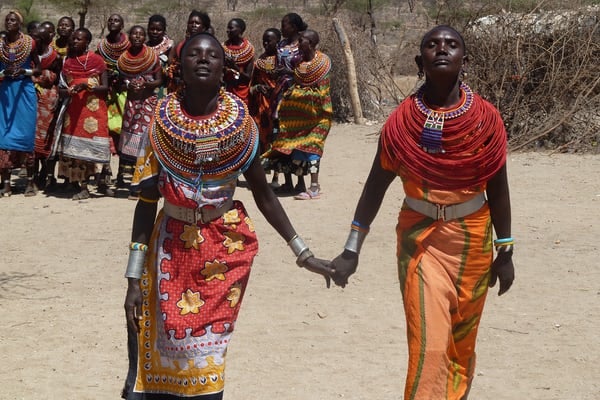Chapter 1 Celia’s Daughter June 27, 1950, should have been a day of triumph for an ambitious young girl just turned seventeen—the culmination of four years of outstanding academic achievement. It was graduation day at Brooklyn’s James Madison High School. Ruth Bader had been chosen as just one of four students to speak for her eight hundred classmates. Instead, it was a day of wrenching grief.
Two days before, Ruth’s mother, Celia, had succumbed to cancer after a four-year struggle. Ruth knew her mother had been waging a losing battle. Watching the physical deterioration of the parent who represented nurture and security, along with her father’s silent grief, had been anguishing for the sensitive adolescent. Yet with Celia’s encouragement, she won prestigious college scholarships, played in the school orchestra, and cheered on the football team as a baton twirler—never once revealing to her schoolmates the illness that shadowed the Bader household in Flatbush. By the end of summer, the ground floor of the modest gray stucco house at 1584 East Ninth Street stood vacant, a symbol of loss and abandonment following her mother’s death and her father’s emotional and economic collapse.
***
Celia Bader gave birth to her second daughter, Joan Ruth, on March 15, 1933, at Beth Moses Hospital in the borough of Brooklyn in New York City. (Ruth’s first name was dropped in kindergarten when there proved to be too many other children who answered to Joan.) The Baders brought the infant back to their apartment in Belle Harbor, a town near the ocean in the borough of Queens, just as they had her older sister, Marilyn. The new baby, energetic from the start, kicked so much that Marilyn promptly dubbed her “Kiki.” The name stuck.
The boroughs, like the rest of the country in 1933, faced an unprecedented economic depression. Factories lay idle. Construction had come to a standstill. The banking system had crumbled, wiping out the hard-earned savings of millions. One wage earner in four was laid off, and according to the U.S. Children’s Bureau one out of five children was not getting enough to eat. As tax revenues dried up, teachers went unpaid. In other parts of the country, schools simply closed their doors. In the Red Hook section of Brooklyn, jobless men put up makeshift shacks of junked Fords and old barrels at the city dump dubbed “Hoovervilles” in derisive reference to President Herbert Hoover’s economic policies.
Nathan Bader, Ruth’s father, was no stranger to hard times. He had begun his own struggle to earn a living shortly after his arrival in New York as a shy thirteen-year-old Russian Jew from a town near Odessa. Denied admission to schools in the Old World because of anti-Semitism, he had attended only Hebrew school. His mother tongue was Yiddish until he learned English at night school in his new homeland. Nathan worked in his father’s business, Samuel Bader and Sons, which specialized in inexpensive furs. By the 1920s, he felt financially secure enough to marry Celia Amster.
Celia, who arrived in New York City while still in her mother’s womb, had been conceived in a little town near what is now Cracow, Poland. Growing up in a Yiddish-speaking household in Manhattan’s Lower East Side, the primal homeland for immigrant Jews, she developed a passion for reading. Indeed, she so often walked down the bustling, crowded streets with her head buried in a book that on one occasion she tripped and broke her nose. Her father, recognizing that she was the most intelligent of his three daughters, had enlisted her help with his bills, which she wrote out in a mixture of English and Yiddish: for example, “one cabinet, gefixed” (repaired).
Though eager to continue her education, Celia had to settle for a commercial emphasis in her course work at Julia Richman High School, a massive brick building on East Sixty-Seventh Street. At least the training would spare her the fate of her older sister, Sadie, who worked in a sweatshop until marriage. Upon graduating at the age of fifteen, Celia found a job as a bookkeeper and secretary for a fur maker in the bustling, densely packed garment district, a roughly rectangular area of Manhattan ringed by West Thirty-Fifth and Forty-Second Streets and Seventh and Ninth Avenues, where a largely Eastern European workforce fueled the trade. The position allowed her to develop a familiarity with the industry, capitalizing on her innate business instincts and her ability to shrewdly assess people.
The personable and highly intelligent young woman had just the qualities that the shy, sentimental Nathan instinctively sought in a wife. Celia, according to her daughter, would always be the stronger partner in their new household, advising her husband on his business as well as other matters. After marriage, the couple joined the Belle Harbor synagogue. In 1927, two years before the stock market crash, Celia gave birth to their first child, Marilyn Elsa.
***
The downward economic spiral after Black Thursday in October 1929 prompted many young couples like the Baders to delay having more children. But in the fall of 1932, a new baby was on the way. Three years later, economic recovery remained elusive. Despite the Roosevelt administration’s many initiatives, the country remained mired in poverty and despair. The Baders were spared the worst hardships; however, in 1934, they faced a different kind of loss. Six-year-old Marilyn was fatally stricken with spinal meningitis. Though Kiki was too young to remember her sister, she later recalled how deeply her parents mourned Marilyn’s death. Every month, in the cold of winter or the heat of summer, they trudged to the cemetery. On the anniversary of Marilyn’s death, they went to the synagogue to recite the Kaddish, the traditional Jewish prayer of mourning. Marilyn’s picture continued to hang over the headboard of the Baders’ bed, making her a looming presence throughout Kiki’s childhood. There is no way to measure the impact of parental grief on their surviving daughter or to know whether it contributed to her preternatural seriousness. Ruth herself, however, later remarked that she grew up with the very “smell of death,” alluding to the cloud her sister’s passing cast over the Bader household.
Hoping to ease the pain with new surroundings, Nathan and Celia moved to Brooklyn, though the neighborhood was less desirable than the one left behind in Belle Harbor. They soon discovered that sustaining a separate apartment even in Flatbush was economically impossible. Because Nathan’s brother Benjamin had married Celia’s younger sister, Bernice (Buddy), the Bader brothers and their wives decided to share the downstairs of a two-family house in Flatbush until they could afford to live in separate houses on East Ninth Street.
Though the move to Flatbush was primarily initiated as a response to grief, it eventually turned out to be fortuitous. Flatbush was one of Brooklyn’s six original colonial towns. Over the years, it had been transformed into a semi-urban area with a Jewish population that by 1930 was rapidly approaching the million mark, the largest concentration of urban Jews in the world. Yet the Jewish community was anything but homogeneous. Groups differed in culture, wealth, and religious affiliation as well as in origin—Western European, Eastern European, and Middle Eastern. Brooklyn’s Syrian Sephardic Jews—a minority within a minority—maintained their traditional ways and food preferences as well as their Arabic language. In contrast, the many Eastern European Ashkenazi Jews tried hard to assimilate. After achieving some modest economic success, most moved out from the Lower East Side and from more crowded Brooklyn neighborhoods like Williamsburg and Brownsville to escape the congestion and shabbiness along with the weight of old-world strictures. If not quite the suburbs, the move brought more grass and open space.
As a sign of their newfound freedom, Jews of Nathan and Celia’s generation often strayed from Orthodox Judaism with all its rules and rituals. Many chose to forgo Sabbath services, leaving Brooklyn’s houses of worship half-empty on Saturday mornings. Sloughing off vestiges of their cultural and ethnic distinctiveness, they took pride in their “Americanness”—their ability to speak English, to wear American clothes, to have an education beyond the Talmud, and to escape the historical cycle that had locked even the most ambitious sons into the ghetto.
Yet at the same time, even those who were secular clung to cherished parts of their tradition—lighting candles for Friday dinner, keeping kosher kitchens while their children were young or eating only kosher meat and poultry, and observing the more important religious holidays, notably the high holy days from Rosh Hashanah through Yom Kippur. Those needing a synagogue for the holy days had plenty of choices; more than half of all the synagogues in New York City had a Brooklyn address. Some in the community relished the sense of belonging that came from hearing a Yiddish radio station playing popular dramas such as
Bei tate-mames tish (Round the family table) or musical programs like
Yiddish Melodies in Swing—though not Celia, who saw Yiddish as the language of the Old World. Instead, the Bader family listened to
The Goldbergs, a weekly comedy-drama created by the talented writer and actress Gertrude Berg. Playing the warmhearted Bronx matriarch Molly Goldberg, Berg guided her radio family and neighbors through the challenges of assimilating and simultaneously maintaining their roots as Jews while coping with the travails of the Great Depression and World War II. Mrs. Goldberg was an “amalgam of Jewish aunts, [mothers], and grandmothers,” Kiki later recalled. However, she hastened to point out that her own mother “did not yell out of the window” in their working-class neighborhood, as did Molly Goldberg.
Flatbush in the 1930s and 1940s was home not only to Jews but also to Italians, Irish, and a smattering of Poles who lived on the same tree-lined streets, abutting busy Coney Island Avenue and Kings Highway. Each ethnic group was secure in its own identity, but that did not negate tensions among them. Anti-Semitism in the immediate neighborhood of East Ninth Street was not a major problem, although it certainly existed. Two elderly Catholic women living on the same block as the Baders clung to the belief that if a Jew came into the house, especially for lunch, it would bring bad luck—a superstition they transmitted to the boys for whom they served as foster parents. Other children on the street repeated stories that matzo was made from the blood of Christian boys and called Kiki and her Jewish friends “kikes.” Nonetheless, a measure of tolerance prevailed in the neighborhood of modest homes and apartments.
Both homes and streets served as children’s playgrounds for games of “red light, green light,” giant steps, jump rope, jacks, and marbles. Before and after games, youngsters and especially their teenage siblings, gathered in nearby candy stores and soda shops to spend their twenty-five-cent weekly allowances on Cokes, egg creams, comic books, movie magazines, and an occasional newspaper.
What bound the citizens of Flatbush together was a sense of neighborhood solidarity and an intense yearning to be solidly middle class. Even if the Great Depression had thwarted their own youthful dreams, they could transfer hopes and aspirations to their children. Weathering the strains of the worst economic crisis the country had ever experienced, they nurtured a disproportionate share of the twentieth century’s most distinguished citizens—many of them Jews. George Gershwin, Aaron Copland, Alfred Kazin, Norman Mailer, Mel Brooks, Woody Allen, Beverly Sills, Barbra Streisand, Milton Friedman, and Sandy Koufax would become household names. So would that of Nathan and Celia Bader’s daughter.
Copyright © 2018 by Jane Sherron de Hart. All rights reserved. No part of this excerpt may be reproduced or reprinted without permission in writing from the publisher.

